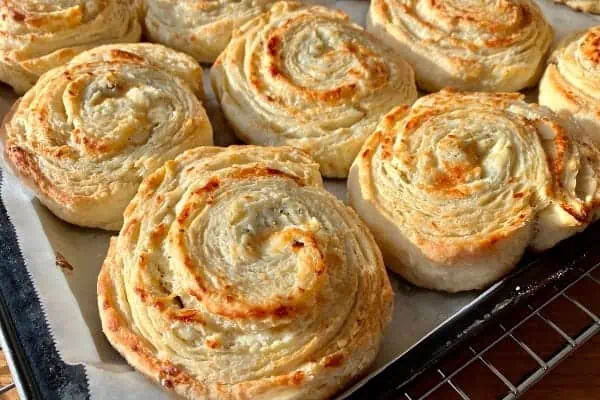As I reflect upon the approaching year end, I would like to thank you, the readers, for providing me with encouragement, enthusiasm and support for my articles. I hope that they have encouraged you to explore new wine territory and given you new ideas of wines to try.
I look forward to continuing to taste new things in 2009 and hope that you will join me to for that trip.
New Years Eve … there seems something joyful and beautiful and yet sad and haunting about that night. Will we be alone? Will we be with others? Will the evening be just what we wanted or something entirely different than we expected?
We truly won’t know until January 1st dawns and we launch into the whole new opportunity and promise that is the New Year.
But I do know that my happiest ones have included wine … specifically Champagne or other sparkling wines.
The pop of the cork, the wisp of smoke-like vapour that floats gently from the mouth of the bottle immediately following the opening, the sound of the bubbly elixir tumbling gently into the flute, the sudden chill as the glass drops in temperature.
These are all sensations that come from the experience of champagne style wines and each is a delight.
Wikipedia explains that “although the French monk Dom Perignon (1638-1715) did not invent champagne, it is true he developed many advances in the production of this beverage, including holding the cork in place with a wire collar to withstand the fermentation pressure. In France, the first sparkling Champagne was created accidentally; its pressure led it to be called “the devil’s wine” (le vin du diable) as bottles exploded or the cork jolted away.”
It turns out that the “méthode champenoise” was identified by an English scientist, Charles Merrit, in 1663. So much for the good story about jolly monks enjoying bubbly in the monastery, though I do like the term “the devil’s wine”!
But France made the drink what it was, starting with French kings serving it in court and the emergence of the major French champagne houses (or vineyards/producers) including Ruinart, founded in 1729 and followed by Taittinger (1734), Moët et Chandon (1743) and Veuve Clicquot (1772).
All are still available and each is a taste experience to itself. Champagnes from the last two houses mentioned are listed by the Yukon Liquor Corporation and are priced at $63.20 and $67.10, respectively.
I am particularly fond of Veuve Clicquot, with its #2 pencil – orange label and tiny bubbled toast taste.
We toasted the purchase of our first house almost 19 years ago with a bottle of this. And we left another bottle of it in the refrigerator for the person who bought the house, seven years later, as a surprise and thank you.
So it’s not just the wine, it’s the associated memories.
But there is such a broad world of wonderful sparkling wines to explore, so certainly look outside of the French region of Champagne for wonderful bubbly alternatives.
Tomorrow night, I am excited to be trying a red, sparking Australian Shiraz (Wyndham Estate Bin 555) to celebrate the engagement of friends and usher in the Christmas season.
It was special for the wine show this year, but there may be a bottle or two left at the Liquor Corporation.
Yellowtail offers another Australian sparkler, Yellowtail Bubbles, at $15.85, though I personally find it a little sweet for my taste and not terribly interesting.
For 90 cents less, you might try the Birkedal & Hartmann Chamdeville, which I find much more complex. Or spend a buck more and buy excellent Spanish “Cava” sparklers from Friexenet … both the Cordon Negro in the flat black bottle ($16.75) and the Carta Nevada Brut in the clear frosted bottle ($16.50) are very good.
As I mentioned several articles ago, I also have a fondness for the German Henkell Trochen ($16.25).
Don’t overlook the Italian lightly sparkling wines from the area outside Venice. Prosecco is a type of slightly lighter, but still dry-tasting wine and the Mionetto Il Prosecco Frizzante ($19.05), with the bottle cap lid, or the Villa Teresa Organic Prosecco with the Grolsh beer style stopper ($17.45) are both well worth tasting.
FYI, Frizzante means bubbly in Italian.
If your taste runs more toward sweeter sparklers, you’ll also enjoy Mionetto’s excellent Moscatto Frizzante (also $19.05), which is a real treat and one of the few sweeter style bubblies that I have enjoyed.
The Italian Spumantes, like Martini & Rossi’s Asti ($16.25) is another alternative worth exploring.
Whatever your choice, adhere to the following:
1) Serve it chilled, ideally 7 to 9 degrees Celsius
2) Open the bottle like Marilyn Monroe did! OK, this one is weird, but in one of her movies, The Seven Year Itch, she tells the guy with her to stop tugging on the cork and instead shows him how hold the cork tight and turn the BOTTLE. It really works, I swear! Use a tea towel or napkin doubled over to get a better grip on the cork and prevent any potential for the cork flying off and putting out someone’s eye … and then turn the bottle like Marilyn said.
3) Serve it in champagne flutes, the tall skinny glasses, not the shallow ones your grandparents might have had. Too much air gets mixed with wine in the shallow ones, plus you can’t watch the bubbles ride up the glass the way you can with flutes.
I wish you and your families a healthy, safe and secure 2009. Make plans to walk or stay with friends so you can enjoy your bubbly of choice fully and usher 2009 in safely.
Happy New Year, and Cheers!




